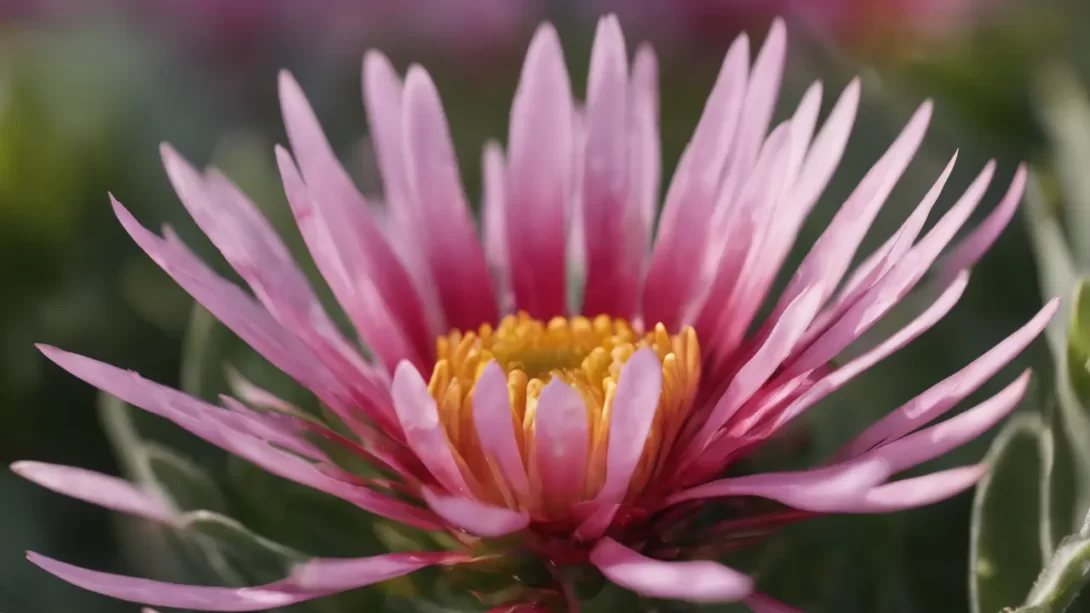The ice plant, known scientifically as Delosperma, is a popular succulent widely appreciated for its vibrant flowers and hardy nature. Propagating ice plants is a rewarding endeavor that allows gardeners to expand their collection and share these delightful plants with others. Understanding the best practices in propagation ensures healthy growth and abundant flowering.
Different Methods of Propagation
There are three primary methods of propagating ice plants: seeds, division, and stem cuttings. Each method has its unique advantages and requirements. Seed propagation is ideal for experimenting with new varieties, while division is best for quickly multiplying mature plants. Stem cuttings, on the other hand, are perfect for beginners due to their simplicity and high success rate. The choice of method depends on the resources available, the condition of the parent plant, and the gardener’s preference.
Propagation Through Seeds
Propagating ice plants from seeds can be a fascinating process, though it requires patience. To start, collect seeds from a mature ice plant or purchase them from a reliable supplier. Sow the seeds in a well-draining soil mix, lightly covering them with soil. The key to successful germination is maintaining consistent moisture without overwatering, as well as providing plenty of light. A warm, bright environment is ideal for germination, which can take anywhere from a few days to a couple of weeks. Once the seedlings emerge, they should be cared for gently until they are strong enough to be transplanted into individual pots or a garden setting.
Propagation Through Division
Dividing ice plants is a straightforward and efficient way to create new plants from an existing mature one. The best time to divide ice plants is in the spring or early summer, when the plant is actively growing. Start by gently removing the plant from its pot or garden spot, being careful to minimize root damage. Examine the root ball and identify natural divisions or clumps. Using a clean, sharp knife or garden shears, carefully separate the root ball into smaller sections, ensuring each division has a good amount of roots and shoots. After dividing, allow the sections to dry for a day to let the cuts callous over, reducing the risk of root rot. Plant each division in well-draining soil, and water lightly to encourage root establishment. In the weeks following, provide consistent care while the new plants establish themselves in their new environment.
Propagation Through Cuttings
Stem cuttings are a popular and successful method for propagating ice plants. Choose healthy, vigorous stems from the parent plant, ideally those that are free of pests and diseases. Using a clean, sharp knife or scissors, cut a 4-6 inch length of stem. Remove the lower leaves to expose a bare stem, which will be inserted into the soil. Allow the cutting to dry for a day or two to form a callous, which helps prevent rotting. Plant the cutting in a well-draining soil mix, ensuring that the exposed stem is well buried. Water sparingly, just enough to keep the soil slightly moist, as overwatering can cause the cutting to rot. Place the pot in a bright, warm location, but out of direct sunlight, to encourage rooting. Root development can take a few weeks, after which the new plant can be gradually acclimatized to more direct light and regular watering.
Post-Propagation Care
After successful propagation, providing the right care for your young ice plants is crucial for their growth and health. These plants thrive in bright, sunny locations, so ensure they receive plenty of light. However, gradually acclimate them to full sun to prevent sunburn. Ice plants prefer well-draining soil, typically a mix suitable for succulents or cacti. Water the new plants sparingly, allowing the soil to dry out between watering. Overwatering can lead to root rot, a common issue with succulents. The ideal temperature range for ice plants is between 65°F and 80°F (18°C – 27°C), though they can tolerate slightly cooler temperatures at night.
Fertilizing and Mulching
Young ice plants benefit from occasional fertilization, especially during their active growing season. Use a balanced, water-soluble fertilizer diluted to half the recommended strength, applied once every 4-6 weeks. Avoid over-fertilizing, as this can lead to excessive growth at the expense of flowering. Mulching is not typically necessary for ice plants, as they are drought-tolerant and prefer a dry topsoil. However, a light layer of gravel or sand can help maintain soil moisture levels and prevent weed growth.
Common Pests and Diseases to Watch For
While ice plants are relatively hardy, they can be susceptible to pests like aphids and mealybugs. Regular inspection and prompt treatment with insecticidal soap or neem oil can control these pests. Root rot is a primary concern, usually caused by overwatering. Ensuring good drainage and avoiding waterlogged soil will help prevent this issue.
Troubleshooting Common Issues in Propagation
If you encounter problems like poor germination, rotting cuttings, or unsuccessful division, reassess the environmental conditions. Ensure adequate light, correct watering practices, and suitable soil conditions. Patience is key, as some plants may take longer to establish and grow.
Conclusion
Propagating ice plants can be a rewarding and enjoyable aspect of gardening. By understanding the various propagation methods and providing appropriate care, gardeners can successfully multiply their ice plant collections. Experimenting with different techniques and adjusting care routines as needed can lead to thriving, beautiful ice plant displays in your garden. Whether you’re a seasoned gardener or a beginner, the world of ice plant propagation offers endless possibilities for enhancing your garden’s beauty and diversity.



